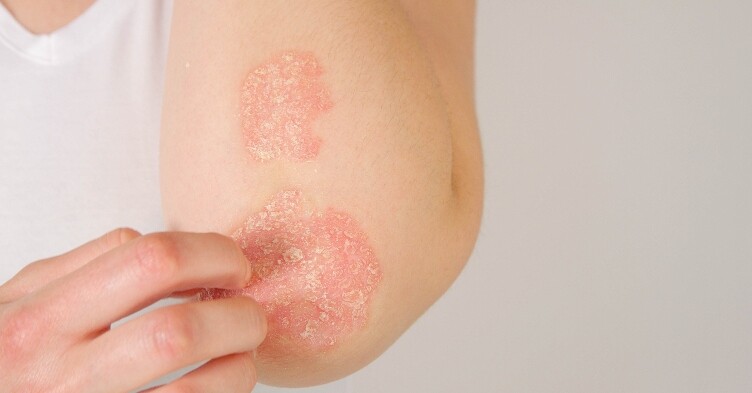How dermatology patients become detectives

I recently attended the National Eczema Society’s day to celebrate Eczema Week. One of the presentations discussed skin allergy and allergy testing in particular.
The speaker asked the audience if any of them had had patch testing and if they had a positive result did they now know what they were allergic to.
I was amazed to see that not all had been given information relating their specific allergens and were not clear what they were and the other names for the same allergen.
Patch testing is indicated if allergic contact dermatitis is suspected (type IV hypersensitivity – also known as cell mediated or delayed type hypersensitivity occurring 48-72 hours after contact).
It involves the reproduction under the patch tests of an allergic contact dermatitis in an individual sensitised to a particular antigen(s).
The standard method involves the application of antigen to the skin at standardised concentrations in an appropriate vehicle and under occlusion for 48 hours before removal with a final reading at 96 hours.
There is a standard series of allergens tested with additional ones based on the clinical assessment and history (Johnston et al 2017). Following the test patients are given information regarding their specific allergens so they can then avoid them.
This detective role then becomes a challenge. I have been patch tested and know I am allergic to limonene, linalool (fragrances) and mercury and despite having my dermatology knowledge, I also have to become a detective both for my self and also my patients.
For example, limonene and linalool are in toothpaste (see resources) but not all toothpastes are listed so it means looking at the labels and contacting the manufactures for clarification of their products or looking for alternatives.
Some products are clearly labelled with the list ingredients and for others it is not always that clear. This includes products used on a daily basis such as cleaning products, shampoos etc. and medications purchased OTC (over the counter) or prescribed.
As healthcare professionals we need to ensure we signpost our patients and families to information they can use.
After patch testing patients are given information on the allergen(s), also highlighting different names for the same allergen, its sources and how to avoid it backed up with written or online information appropriate to their level of understanding.1
Interestingly my observations at the eczema event are reflected in a study, which showed only 29% (41/141) patients remembered the name of the allergen after 10 years although 79% (111/141) of patients recalled having had a positive patch test result.2
Related Article: Call for regulatory guidelines as NHS adopts AI in dermatology care
So I challenge you to take one of the allergens listed in the standard series Appendix 1 in the BAD guidelines, can you identify the allergen at home or when you go shopping? Yes, it is a daily challenge for our patients and their families.
References
- Johnston, G.A., Exton, L.S., Mohd Mustapa, M.F., Slack, J.A., Coulson, I.H., English, J.S.C. and Bourke, J.F. British Association of Dermatologists’ guidelines for the management of contact dermatitis 2017. Br J Dermatol, 176: 317–329. doi:10.1111/bjd.15239: http://www.bad.org.uk/shared/get-file.ashx?id=4375&itemtype=document
- Jamil WN, Erikssohn I, Lindberg M. How well is the outcome of patch testing remembered by the patients? A 10-year follow-up of testing with the Swedish baseline series at the Department of Dermatology in Orebro, Sweden. Contact Dermatitis 2012; 66:215–20
Resources
- What are the excipients in toothpastes? www.ukmi.nhs.uk/filestore/ukmias/nwqa357.2whataretheexcipientsintoothpastes.doc
- electronic Medicines Compendium (eMC): https://www.medicines.org.uk/emc/ Summaries of Product Characteristics (SPCs) lists the excipients which I signpost patients to.
- European Union – Labeling/Marking Requirements
| Box 4 British Contact Dermatitis Series (Bourke et al 2009) |
|---|
| 36 of the most common allergens such as preservatives in toiletries, cosmetics. Glues, plastics, metal, rubbers, plants, cements, leather, dyes and fragrance:
1. Potassium dichromate – In cement, safety matches, tanned leather, paint, printing ink and crayon, glues, detergents. 2. Neomycin sulphate – An aminoglycoside antibiotic found in medicaments for external use. 3. Thiuram mix – Used in rubber processing, antiseptic sprays, as a preservative in medicaments, a bacteriostat in soaps. 4. Paraphenylenedeamine – Hair dyes and photographic development. 5. Cobalt chloride – Metal, cement and pigments in paint. 6. Caine mix – Detects allergy to local anaesthetics. 7. Formaldehyde-Used in production of urea, phenolic melamine an acetate resins. Used as an astringent, disinfectant, preservatives in cosmetics, metal working fluids, shampoos etc. 8. Colophony – Adhesive tapes, plasters, cosmetics, glues, varnishes and rubbers. 9. Clioquinol – Anti-infective & anti-amoebic agent in topical pharmacaceutical preparations. 10. Balsam of peru – Treatment of haemorrhoids, burns and scabies, fragrance in cosmetics, spices, aromatic additive in food, soft drinks. 11. Ippd black rubber mix – Tyres, gloves, adhesive tapes & squash balls. 12. Wool alcohols – Found in topical medicaments, cosmetics, printing inks, hand lotions, creams and ointments. 13. Mercapto mix – Accelerator in rubber processing. 14. Epoxy resin – Widely used in industry, found in glues, paints, dentures . 15. Parabens mix – Preservatives in creams and cosmetics. 16. Bpf resin – Resin used in adhesives, especially in shoes. 17. Fragrance mix – Found in perfumed goods. Related Article: Abdominal body fat is a higher risk for developing psoriasis 18. Quaternium 15 – Preservatives in medicaments and cosmetics. 19. Nickel sulphate – Alloying ingredient in many metals. 20. Kathon CG Methylchloroisothiazolinone (MCI) and methylisothiazolinone (MI) – Preservative in cosmetics and toiletries. 21. Mercaptobenzothiazole – Accelerator in rubber. 22. Primin – Primin plants. 23. Sesquiterpine lactone mix – This mix consists of three components Alantolactone, costunolide and Dehydrocostunolide. It serves for the detection of a contact allergy against composite flowers. 24. Chlorocresol – Fungicide in creams, topical antiseptics, pharmaceutical products, protein shampoos, baby cosmetics and cooling fluids. 25. Bronopol – Preservatives in cooling fluids hand and face creams, shampoo, mascaras etc. 26. Cetylstearyl alcohol – An emulsifier and emollient in cosmetics and pharmaceutical preparations. 27. Fusidic acid – Topical antibiotic. 28. Tixocortol-21-pivalate – Topical corticosteroid belonging to the group A (hydrocortisone) type of steroids. 29. Budesonide – Non halogenated corticosteroid for use in topical preparations and for treatments of rhinitis and asthma. 30. Imidazolidinyl urea (GERMALL 115) – Preservative for lotions, creams, hair conditioners, shampoos and deodorants, formaldehyde releaser. Related Article: CPD: Case by case – acute and emergency dermatology presentations 31. Compositae mix – Compositae plants. 32. Diazolidinyl urea (germal 11) – Preservative used in cosmetic creams, lotions, shampoos, hair gels etc. 33. Methyldibromo glutronitrile – Preservative for use in cosmetic products of both leave on and rinse of types. 34. Ethylenediamine dihydrochlORIDE – Stabilizer in steroid creams and rubber latex. Inhibitor in antifreeze and cooling fluids. 35. Chloro- xylenol (PCMX) – Preservative in cooling fluids, creams, topical and urinary antiseptics. Also in pharmaceutical products, hair conditioners, toilet and deodorants, soaps. 36. Carba mix – Used in rubber processing. |

See how our symptom tool can help you make better sense of patient presentations
Click here to search a symptom


I was amazed at a recent talk to see that not all allergy patients had been given information relating their specific allergens and were not clear what they were and the other names for the same allergen.



